Few watches in history carry the same weight of legend as the Omega Speedmaster Professional, affectionately known as the Moonwatch. Beyond its role as a chronograph, the Moonwatch has become a symbol of exploration, endurance, and human ingenuity. From its early beginnings in the 1950s to strapping onto the wrists of astronauts during Apollo 11 in 1969, the Speedmaster has transcended horology to cement itself in cultural history. Today, Omega continues to refine and reimagine the Moonwatch while staying true to its spacefaring DNA.
The Birth of the Speedmaster
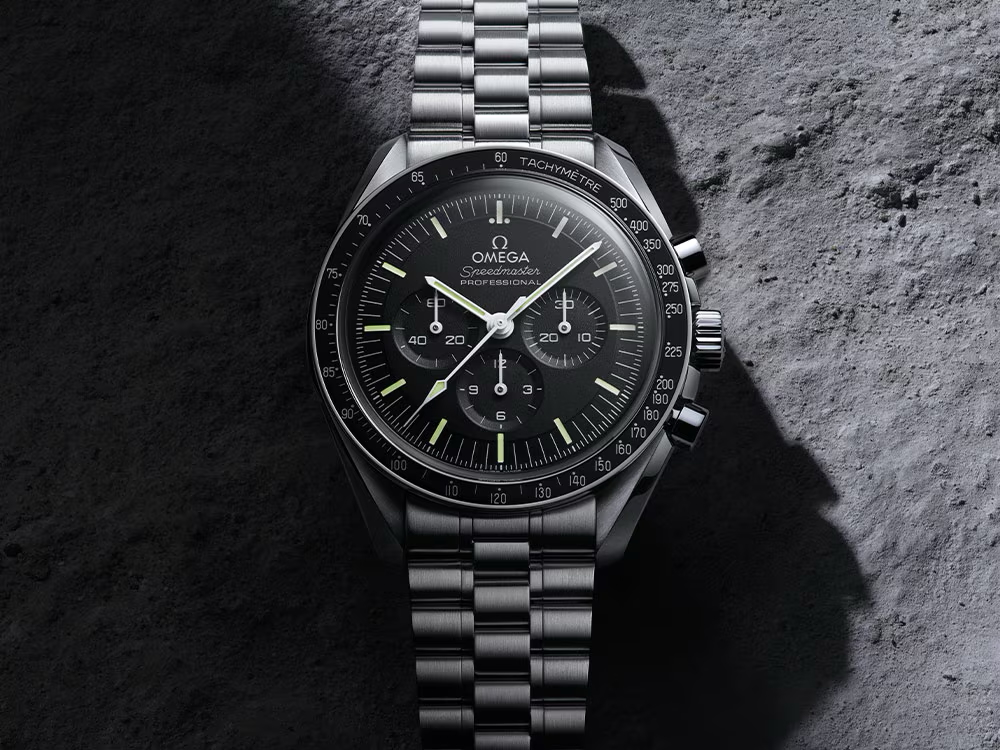
Introduced in 1957 as part of Omega’s Professional line, the Speedmaster wasn’t originally designed with outer space in mind. It was marketed as a racing chronograph, with its tachymeter bezel—the first of its kind—allowing drivers to measure speed with precision. Its legibility, robustness, and reliability quickly made it a favourite among professionals beyond the racetrack.
But it wasn’t long before the Speedmaster’s destiny shifted from cars to rockets.
NASA’s Grueling Tests
In the early 1960s, NASA began searching for a wristwatch capable of surviving the extreme conditions of space travel. Several brands submitted models, but only Omega’s Speedmaster passed the brutal battery of tests. The watch endured everything from violent temperature fluctuations to punishing vibrations, shocks, and even decompression.
In 1965, the Speedmaster was officially flight-qualified by NASA for all manned space missions. From that moment forward, it would become an essential tool for astronauts venturing into the unknown.
Apollo 11: The Watch That Went to the Moon
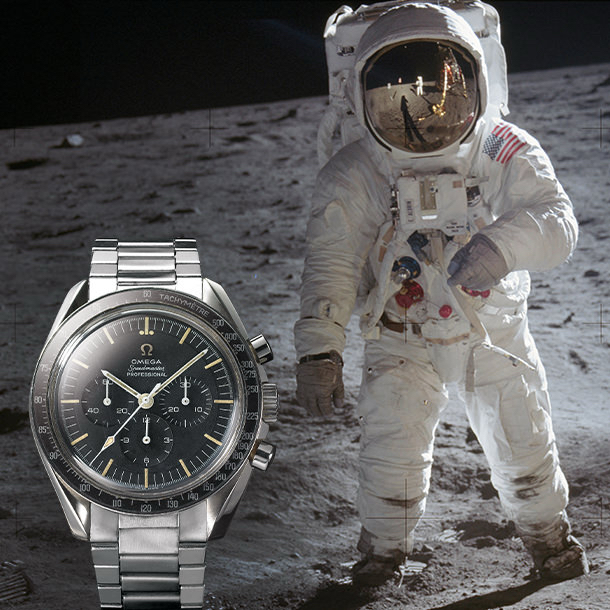
On July 20, 1969, the Omega Speedmaster achieved immortality. As Neil Armstrong and Buzz Aldrin made their historic steps onto the lunar surface, Aldrin wore his Speedmaster strapped to the outside of his spacesuit. Armstrong, who had left his own watch inside the lunar module as a backup for a malfunctioning clock, relied on Aldrin’s Moonwatch to keep time during humanity’s first walk on another world.
That moment forever sealed the Speedmaster’s reputation—not just as a chronograph, but as the Moonwatch, a name that would follow it through generations.
Beyond Apollo: A Tool in Crisis
The Moonwatch’s story didn’t end with Apollo 11. In 1970, during the perilous Apollo 13 mission, the Speedmaster proved itself again. When the spacecraft suffered a catastrophic oxygen tank explosion, astronauts relied on their Speedmasters to time a critical 14-second engine burn that corrected their trajectory and ensured a safe return to Earth. Without that precise timing, Apollo 13 might have been lost.
The Modern Moonwatch
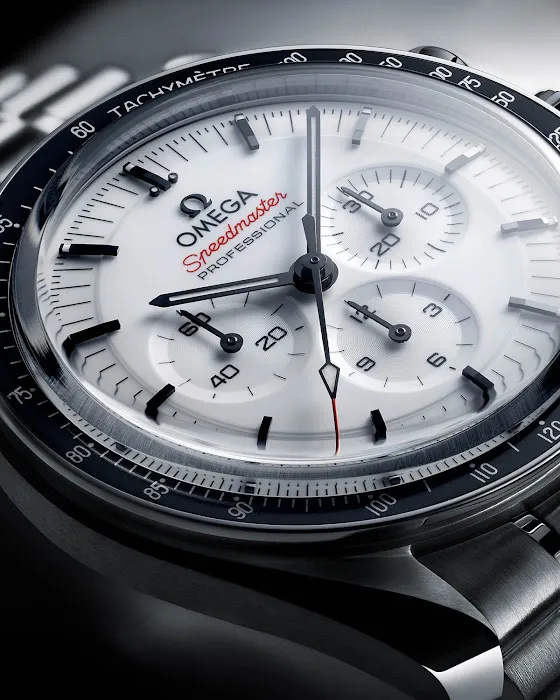
Today, the Moonwatch remains one of Omega’s most beloved and enduring models. The design has remained remarkably consistent—hesalite crystal, asymmetrical case, tachymeter bezel, and manually wound movement—preserving its historical DNA. At the same time, Omega has introduced modern innovations, including models with sapphire crystal, Co-Axial escapements, and Master Chronometer certification for improved accuracy and durability.
Collectors can choose between versions that closely replicate the original 1969 design and those that embrace modern materials like Sedna gold or ceramic. Each, however, carries the same spirit of exploration that made the Speedmaster a legend.
Why the Moonwatch Endures
Part of the Speedmaster’s enduring appeal lies in its dual identity. On one hand, it is a serious professional tool, battle-tested in the harshest environments known to humankind. On the other, it is a style icon—its clean, functional design pairs effortlessly with anything from a spacesuit to a suit and tie.
Unlike many luxury watches, the Moonwatch’s significance transcends fashion. It tells a story of courage, innovation, and the human desire to push beyond limits. Owning one isn’t just about acquiring a fine chronograph; it’s about wearing a piece of history.
The Future of the Moonwatch
As Omega continues to release new iterations, from limited editions celebrating Apollo anniversaries to cutting-edge Master Chronometer versions, the Moonwatch shows no signs of fading into the past. In fact, its legacy grows stronger with each new generation of collectors and enthusiasts who discover its story.
With NASA preparing for new lunar missions under the Artemis program, there is every chance that the Speedmaster’s journey to the moon isn’t finished. Omega’s Moonwatch might soon find itself back where it belongs: on the wrist of astronauts walking the lunar surface.
Final Thoughts
The Omega Speedmaster Moonwatch isn’t just a watch—it’s a cultural artifact, a scientific instrument, and a timeless design. From Apollo 11 to the present day, it has remained a beacon of horological excellence and human achievement. Whether you’re a seasoned collector or someone just beginning to explore the world of fine watches, the Moonwatch represents one of the most meaningful pieces you can own.
It is not only the King of chronographs, but also a reminder of humanity’s greatest leap.
| Model / Family | Crystal & Caseback | Movement | Water Resistance | Notable Features | Approx. Price Range (USD) |
|---|---|---|---|---|---|
| Classic Hesalite Moonwatch (traditional Moonwatch spec) |
Hesalite (acrylic) crystal; solid caseback (NASA engraving optional on some editions) | Manually wound chronograph caliber (traditional Lemania-derived/SPEEDMASTER family; historically caliber 1861/3861 variants) | 50 m (splash resistant; not for swimming) | Closest to the original 1960s Moonwatch: vintage aesthetic, warm dial tones, easier to service crystals, traditional feel. | $6,000–$8,000 |
| Sapphire Sandwich Moonwatch (sapphire crystal front & display back) |
Sapphire crystal front + sapphire display caseback (exposes movement) | Manually wound chronograph caliber (modern variants; similar performance to Hesalite versions) | 50 m | Sleeker, modern presentation with exhibition caseback—popular for buyers who want to view the movement and finishing. | $7,500–$9,500 |
| Co-Axial / Master Chronometer Moonwatch (modern tech & anti-magnetic) |
Available in Hesalite or sapphire options (depending on sub-model); some use sapphire display backs | Omega Co-Axial automatic / manual calibers with Master Chronometer certification (higher accuracy and magnetism resistance) | 50 m (varies slightly by case material) | Modern movement tech (Co-Axial escapement, Master Chronometer anti-magnetic standards), improved accuracy, longer service intervals, offered in steel, titanium, and precious-metal variants. | $8,000–$12,000+ (depending on materials & complications) |
Note: Prices are approximate retail ranges and may vary by market, edition, and retailer. Water resistance quoted is general for Speedmaster Professional models—always check specific model specs before use. For collectors seeking a historically faithful Moonwatch, the Hesalite model remains the closest to the Apollo-era watch; buyers who prioritize modern performance often opt for Co-Axial / Master Chronometer variants.



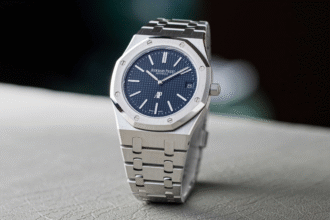
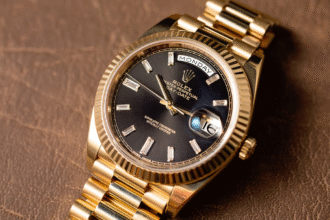
6 Comments